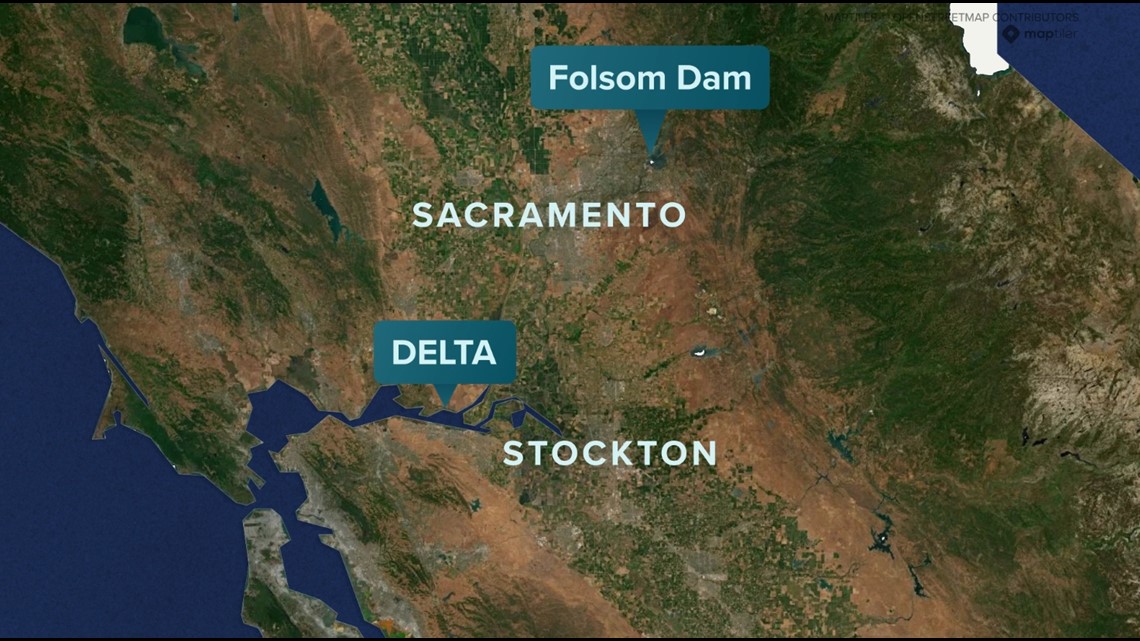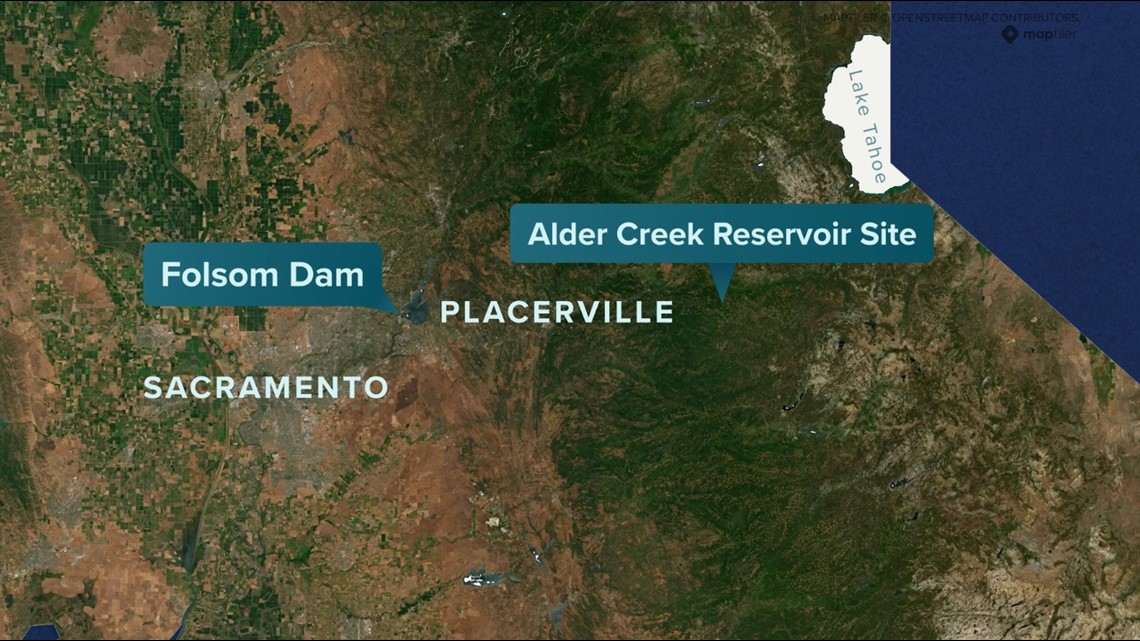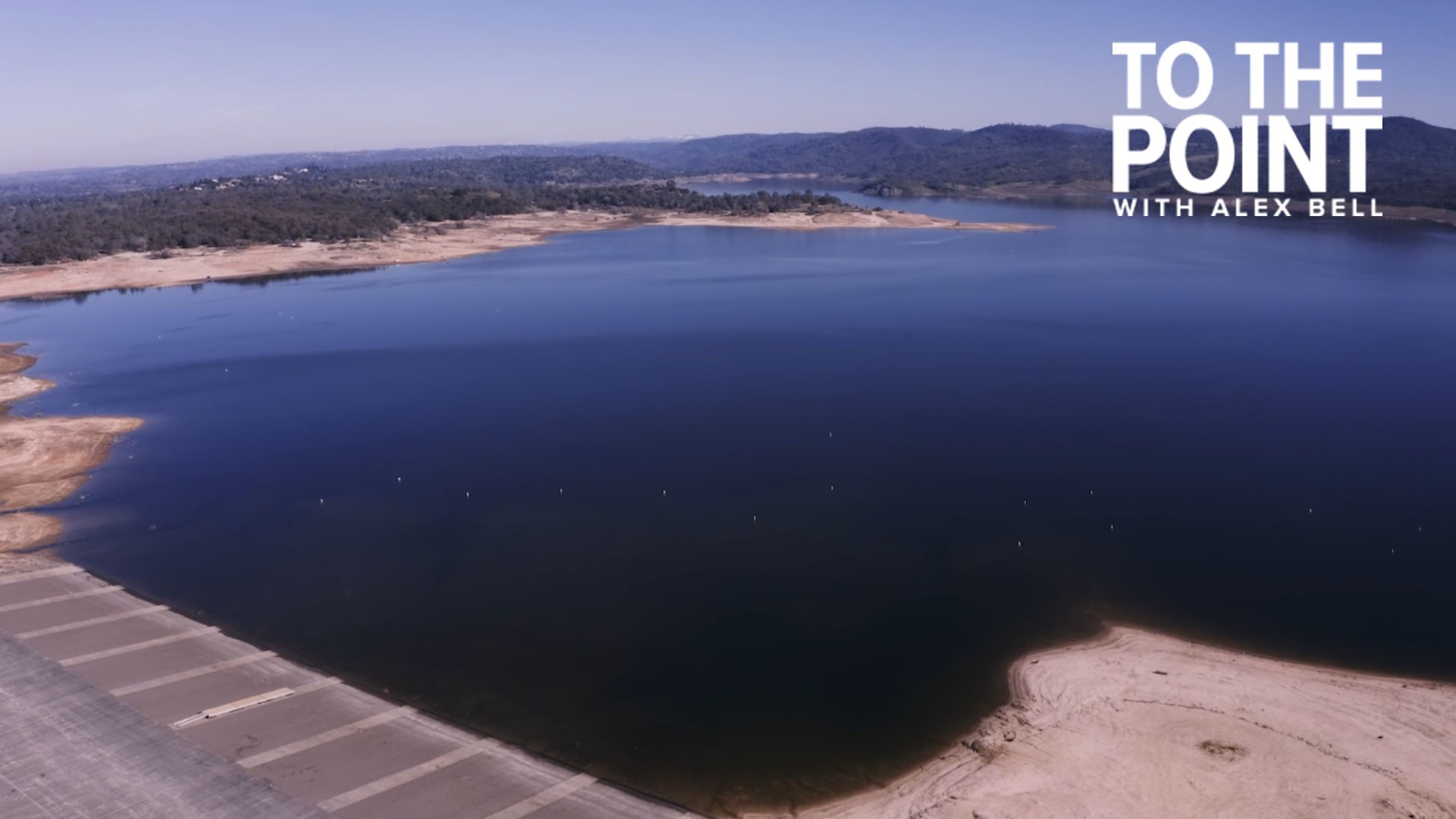FOLSOM, Calif. — Is California wasting its water? The state had a historic winter and the ABC10 Weather Team is investigating where the water is going and if we're wasting it. In Part Two, Chief Meteorologist Monica Woods looks at how the water is stored.
Reservoirs are the first line of water storage in California. There are around 1,500 yet there's still a need for more water most years.
"We built our water system in California principally around scarcity and that is because two out of three years, we don't have enough water," said Jeffrey Mount with the Public Policy Institute of California.
To address that scarcity, California built one of the most elaborate water conveyance systems in the world; capturing snowmelt runoff, storing it above and below ground, then moving it vast distances. Without it, California wouldn’t be the economic powerhouse it is today.
But that system is being pushed to meet multiple needs from water storage to flood control plus recreation, hydropower and the environment.
"We ask a lot of these reservoirs, but our reservoirs are principally built as water supply structures, and that's the way we operate them. Except in the winter, right? I mean, this is one of the things that everybody forgets that in the winter, let's take this wet year that we're having in 2023, we're going to end up with more water than we know what to do with in the fall. And I know what we're going to do is we're going to have to let that water go so we make room for potential floods next winter," said Mount.
It creates tension between flood managers and people wanting to see a full reservoir for water supply.
"So much of how that's operated is based on manuals and calendars that were put into place 30, 40, 50 years ago. Things change," said Daniel Bays.
He's a third-generation farmer in the Central Valley. He, like many other farmers, relies on water coming from Northern California.
"If you look back, we have cycles. We have wet cycles and dry cycles in the state and that's what a lot of the reservoirs and canal systems were built for was to help manage that," said Bays.
With a growing population, the water supply structures are starting to get stretched close to their breaking point.
Drew Lessard with the U.S. Bureau of Reclamation that runs Folsom Dam says the concern is guiding managers to rethink reservoir operations.
"Where do we get to that point where we can ask no more of it? Probably we're getting close to that but we're still looking at ways that we can make and gain efficiency," he said.
Lessard says part of making Folsom more efficient will be expanding its capacity.
"Well, the Corps has a project right now and they already started a year or so ago on raise. The Corps has authorization to raise Folsom Dam three feet," said Lessard.
It'll make room for even more storage. Another project in the works is updating operation manuals. They will rely on improving forecasts, giving reservoir managers more certainty about how much water to let out and how much they can keep in.
"It's sort of the software. The hardware has been built, and now it's how do we work the software on how we route things," said Lessard.
With so many uses, Folsom is sometimes called "the little dam that could." Even beyond flood control and water supply, it's also the first responder when it comes to sending water south towards the Sacramento-San Joaquin Delta to help keep the water fresh and not salty.


This is quite possibly one of the biggest bones of contention for “water wasted to sea.”
"That seems to be the bigger issue that I see as usually, environmental groups aren't that eager to work with farmers or look at growers that are south of the Delta as big evil corporations. It's sad," said Bays.
He says farmers are constantly put into a corner and blamed for wasting water. He says there are still solutions out there.
"Everyone talks about getting another reservoir and I think a reservoir in the right place would be a good tool for us to use," he said.
An American River Basin study found an upstream, additional reservoir may help to address the climate whiplash with more rain than snow falling in the Sierra. One project being considered is the Alder Reservoir.


"It's strategically located so that when there's large rain events, we could be capturing that water directly. Or as the snow melts, we're also able to capture it too and relieve some of that operational pressure on Folsom," said Rebecca Guo with the El Dorado Water Agency.
It would help with water supply, reduce flood risk and provide cold water releases for certain fish species.
"The main benefit of it as we saw this past winter, Folsom was releasing water because there's just not enough storage capacity in Folsom, so this would be able to allow this water to be captured versus spilled where it wouldn't be able to be usable," said Guo.
The idea for the reservoir has been in the books since 1916 when a lot of agricultural growth was happening in El Dorado County. People needing water went looking upstream.
"This would be a part of a system of reservoirs along the South Fork of the American River. You know, the bottom part would be Folsom Reservoir and as you go upstream, there were up to 16 reservoirs planned at that time," said Ken Payne with the El Dorado Water Agency.
Alder Reservoir is the only one still being considered due to its location with a deep canyon perfect for storing cold water which would also help reduce evaporation loss.
"The system that we have in place really sort of began in the Gold Rush and is where we are today ... the conveyance systems that move water vast distances, water rights systems and environmental laws. I would not just say, 'Let's blow all that up,'" said Mount.
"Things change. Our demands change. Our desires as a state change and what we need changes. Crops change," said Bays.
WATCH PART ONE: Water Wasted | How does California measure its water supply?

















